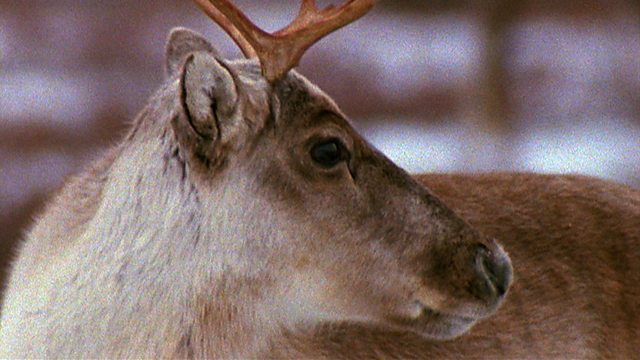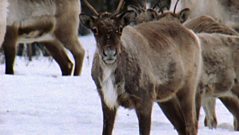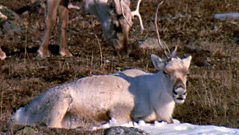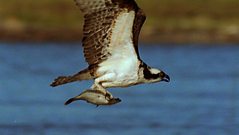
Mothers on migration
Why do Canada's pregnant caribou make their hazardous arctic journey?
We’re joining Martin Kienzler, who is part of an international operation. Martin and his team are attaching satellite collars to caribou so they can track their travels remotely. This year they’re particularly interested in how pregnant females cope, because the future of the entire herd depends on them completing this journey. This is one of our girls - we’ve named her Claudia. Martin and his team quickly measure her vital statistics to build her personal profile, including taking a bit of blood to confirm that she’s pregnant. On with the satellite collar. Now we can track her every move – remotely. And there she goes, with 700 kilometres of some of the world’s harshest terrain ahead of her. That’s over four hundred miles of heavy going – and probably carrying a calf as well. The thing is, we don’t know if she is pregnant for sure... but this blood sample will hopefully give us the good news. So, where are we then? Right now we’re with Claudia in the Yukon Territory of Canada. She’s with over 120,000 others and soon they’ll all be on the move, trekking all the way up to the Arctic National Wildlife Refuge, in Alaska - over four hundred miles away. Why make such a dangerous and difficult journey? For the answer, we have to turn the clock back to the autumn, when an event took place that set this entire incredible journey in motion - The rut. The caribou rut only lasts around 10 days, but during that time around 80 to 90% of all the females will become pregnant. With conception, an unstoppable chain of events is set in motion. In 228 days the pregnant females will give birth, but they can’t give birth here. There’s too many predators, and there’s not enough quality food. This is why the herd must travel north.
Duration:
This clip is from
Featured in...
![]()
Βι¶ΉΤΌΕΔ Nature
Be captivated, informed and inspired by the world's wildlife.
More clips from On the Trail of the Caribou
-
![]()
Born to run
Duration: 02:49
-
![]()
Caribou death traps
Duration: 02:59
-
![]()
Pregnant pause
Duration: 01:03
-
![]()
Synchronised caribou calving
Duration: 01:21
More clips from Incredible Animal Journeys
-
![]()
Caribou resilience
Duration: 00:34
-
![]()
Migration mentality—Osprey Odyssey
Duration: 01:16
-
![]()
Fatal fishing error—Osprey Odyssey
Duration: 01:57
-
![]()
Osprey prowess—Osprey Odyssey
Duration: 00:58










